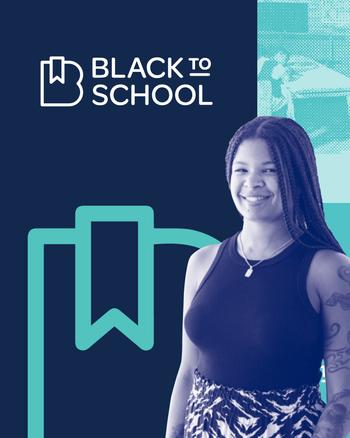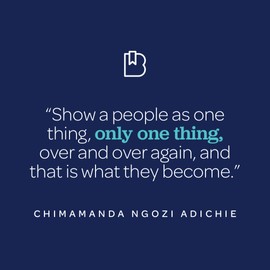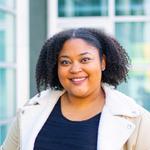Taking us ‘Black to School’ is Taylor’s passion
11/9/2021
When it comes to the public’s knowledge of Black history, there are a lot of gaps. Black to School is a recently-formed collective that wants to fill in what’s missing. One of their earliest members, Taylor Thompson-Youngblood, is a senior designer here at Ologie who has combined her passion for design with her passion for uplifting and sharing Black stories. Together with a community of researchers, designers, and educators, she collaborates on their newsletter series, which highlights the history & contributions of people across the African diaspora.
So Black to School, I love it, I subscribe, I have been reading them top to bottom and back again. I’d love to hear from you how you got involved with it? What inspired you guys to get this started?
In September 2020, I had decided to do my own project about Black history and designed a poster every day about somebody that I thought other people should know about. I shared that inside of the “Where are the Black Designers?” Slack, and then a UX designer that was already involved with Black to School reached out to me and asked if I would be interested in helping them with a African history newsletter project. (It didn’t have a name at that point.) So I said yes.
At the beginning, there were four of us who met regularly: me, Chinwe who does a lot of research and networking, Ama who is a strategist and researcher, and Kristen, our UX designer. Through our Black to School Collective and a network of other Black educators, we’re able to discuss a variety of themes, where contributors share things that they were passionate about, or maybe even histories that they learned from their families.
Everybody has the same goal, which is to make the world hopefully better and more equitable and feel like it’s for everybody, not just a certain kind of person.
We wanted to give people additional context and stories and information about being Black, showcasing contributions from different disciplines. There are so many elements of history across the African diaspora outside of slavery and the Civil Rights Movement that were not well taught in school, or at least public school.
We want this information to be for everybody. We want everybody to feel some sense of ownership there. So nobody’s really in charge: we’re all students and we’re all teachers.
I think that you bring up a really good point: so many of us were taught that there are four parts of Black (specifically Black American) history: slavery, the Civil War, the Civil Rights Movement, and today. But there’s so much more that we can learn and there’s definitely a big gap.
During school — and I went to both private and public schools — we would have these great lessons about Egypt and these long units about Greece, but it was never any other countries in Africa, outside of Egypt that were really discussed at all as their own culture and their own contributions. It was like, okay, Egypt, that’s what’s going on and then let’s go to another part of the world.
There are so many cool things that people should be excited about and should be aware of. With colonialism, a lot was taken and moved around, but a lot of really cool historical contributions originated in those various countries and that’s not really talked about.
Can you talk a little more about your specific role in the Black to School Collective?
If somebody has a skill and there’s a need for it, it’s truly like: please do that skill. So I made the brand, Instagram graphics, and we collaboratively came up with the name. I also do the second to last edits on our newsletter for tone, flow, and cohesiveness. Occasionally I also reach out to illustrators to share some art, because we’re also trying to highlight different Black artists. Between the four of us, there’s a good mix of both aspirational and grounding personalities and skill sets.
I love that you help provide that balance.
You do need both sides of that energy, especially when this is not what any of us do full time. Keeping that in mind, we try to find a balance that doesn’t burn anybody out but also still fosters growth.
We’re working with additional volunteers now and just trying to build up the community so we can continue to try new things. Down the line we hope to do events with speakers to talk more about certain subjects and just kind of like bring this into more places where it’s more accessible to people.
Is there anything that you specifically have been really jazzed to learn about through the Black to School research?
Doing the initial deep dive on Mansa Musa was really cool. What surprised me was when I sent the newsletter to my dad, he said he had never heard of that person. Especially because my dad taught me a lot about the Civil Rights Movement, and different pieces of Black history. He grew up in South Carolina during segregation, and actually desegregated his high school, and he was a history major. It was surprising but also not surprising when you think of who writes the books and who teaches. It was special to share that moment with him and also learn so much more about different African kingdoms throughout history. Also learning more about Black Wall Street prior to the massacre — how it came to be, what was going on in that community, how it operated, that was really cool.
Our long-term goal is to organize enough content in a way that makes it easier for K-12 schools to teach to students, possibly even starting a kind of community of Saturday Schools in different parts of the country.
I think that’s the beautiful thing about collaborating. In a sense, everybody has the same goal, which is to make the world hopefully better and more equitable and feel like it’s for everybody, not just a certain kind of person. We’re learning from these people. People are learning from us. That’s the feeling and that’s what we want.






